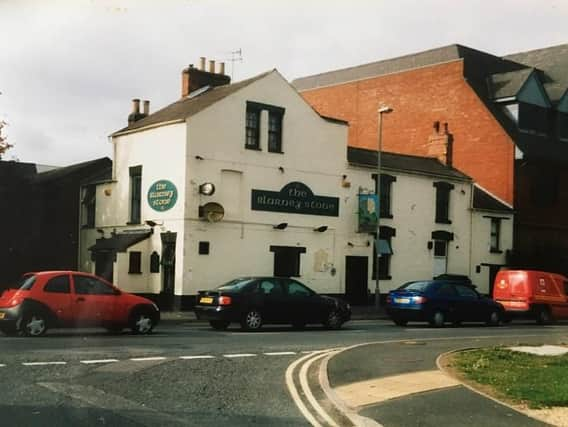Look Back With Little: A closer look at why we have lost so many pubs


Today I want to explore reasons for their concern.
In her book The Inns and Taverns and Beerhouses of Banbury published by the Oxfordshire Family History Society in 1998, Vera Wood studied their locations. The first of these was Bridge Street (Cow Fair/Beast Market).
Taking the period from the 15th century to the 1990s it was possible to identify 24 licensed premises. All have been lost to the trade and only two survive as buildings, namely the Crown and the Albion. The former was a popular venue for dinner dances, especially around Christmas time, and the latter attracted off duty railwaymen especially when Mrs Caroline Curtis was mine host (1920-1947).
Advertisement
Hide AdAdvertisement
Hide AdThe history of Banbury is such that inns and taverns have been key elements in its typicality as a market town.
At the height of Banbury’s importance in this area it was the veritable army of village carriers who made considerable demands on yard space and stabling provided by a significant number of inns, taverns and beerhouses.
In 1861 Hunt of Eydon came to the Waggon and Horses in Butchers Row every Monday and Thursday. Vera Wood records that this Hunt Edmunds house was licensed to accommodate up to twelve horses. By contrast the Struggler in Mill Lane was a canal-linked establishment because several of its licensees were part of boating families, notably Frederick William Tooley (1903-06), Thomas Hambridge junior (1910-13) and Thomas Hambridge senior (1913-31).
Farmers made up a huge proportion of pub customers on market days especially Thursdays. There was a very large social side to buying and selling at the Grimsbury- based Midland Marts. Many inns and hotels provided a market ordinary lunch at a reduced rate, which was whatever the landlords were cooking on that day. The closure of the market in 1998 took away this regular trade influx contributing to the life of the town.
Advertisement
Hide AdAdvertisement
Hide AdOn Canal Sunday Banbury Civic Society aimed to raise community awareness of the dwindling number of licensed premises, especially what may be termed ‘locals’, and the need to address the issue of further loss of the Banburyness of the town.
One of the photographs on their board was of just such a local opened before 1857, which was originally known as the Mechanics Arms.
By the late 1860s it has become the Britannia. Its address in Windsor Street placed it near the canal and railway stations but also part of a pattern of town extension roads which took shape during the 1840s and 1850s and paved the way for industrialisation.
Subsequent construction of terrace houses became homes to working class people who would have considered the Britannia a popular choice.
Advertisement
Hide AdAdvertisement
Hide AdToday the building stands forlorn alongside the busy Windsor Street car park. A plaque embedded into the stonework reminds us that here was a Hunt Edmunds beerhouse. The design of the brewery plaque is very Banbury related: apart from its hop leaf border centre stage is occupied by the 1859 Cross and the Lady on the White Horse, key town assets.
Closer examination of the building reveals that sometime after Vera Wood published her book it became a Free House known as the Blarney Stone under the direction of Shannon Taverns Ltd.
Despite the lengthy period it has been closed there is still interesting evidence of an attempt to attract a new clientele. Cocktails were available between 5pm and 7pm and all day every Friday.
A ‘To Let’ board disguises the fact that with the loss of the housing that provided its customers, the location is not favourable to a pub revival even if only for lunchtime snacks and its permanent loss may be considered inevitable. This does not rule out other community uses for the building.